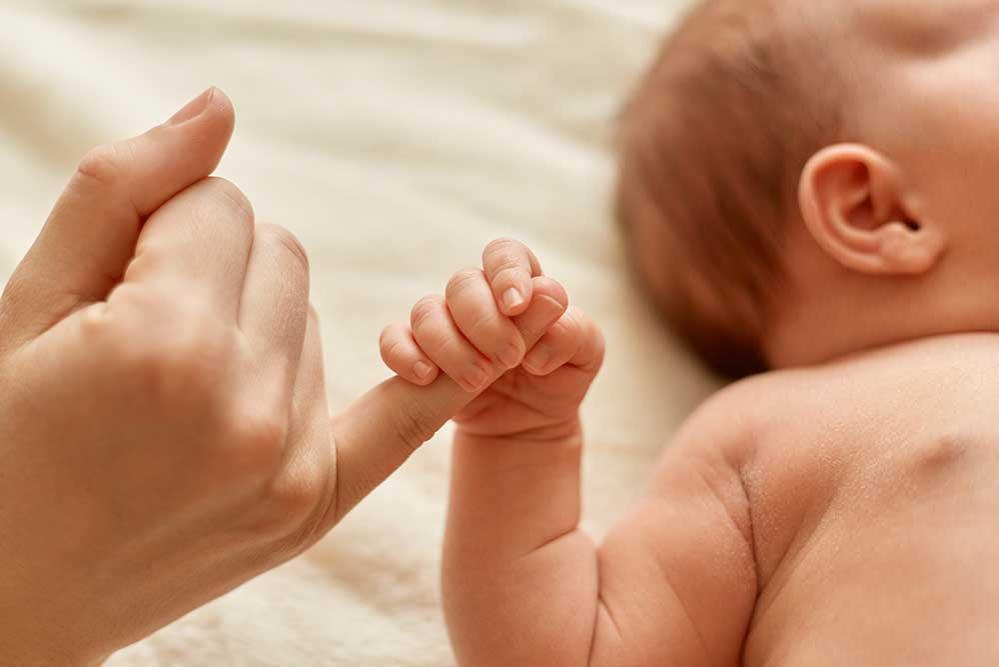
What To Do About Infant Heat Rash
August 5th, 2025 12:00am
Heat rash is a common skin condition in babies, and as the temperatures increase, so does the number of heat-related rashes. Also known as miliaria or prickly heat, heat rashes are common in hot and humid weather. Although temporary and usually harmless, these rashes can be uncomfortable for your little one. To help keep your baby comfortable through the summer months, we will discuss strategies to prevent heat rashes and what to do if one develops.
What Is Infant Heat Rash?
While anyone can develop a heat rash, it tends to be most common in infants. A baby’s skin is delicate, and their sweat glands are not yet fully developed. This can cause sweat to become trapped under the skin, resulting in tiny red bumps, mild swelling, and itchiness. It's most common in skin folds and areas where clothing can cause friction, like the neck, chest, back, diaper area, and behind the knees.
What Causes Heat Rash in Babies?
Heat rash is often caused by:
- Hot and humid weather.
- Overdressing your baby, especially in fabrics that don’t breathe well, or using thick blankets.
- Fever, which can increase sweating.
- Prolonged time in a carrier or car seat.
- Thick emollients or ointments that do not allow the skin to breathe.
Treating Infant Heat Rash
Heat rash will typically resolve on its own within a few days. But there are things you can do to help soothe your baby’s skin and speed up healing.
Cool the Skin
- Move your baby to a cooler, shaded environment.
- Use a fan or AC to lower the room or car temperature.
- Give your baby a lukewarm bath or apply a cool wet cloth to their skin. Avoid hot water.
Keep Skin Dry
- Gently pat the skin dry after bathing. Avoid rubbing the skin and increasing irritation.
- Use a soft towel and allow the skin time to air dry.
- Apply a soothing topical, like aloe vera gel or calendula cream. Moisturizers like oatmeal-based lotion, coconut oil, and shea butter can be helpful in some cases. Remember, some moisturizers can cause the rash to worsen if the skin cannot breathe, so it is always best to patch-test a small area and see how the skin reacts.
Avoid Overheating
- Choose natural fabrics like cotton and linen that allow air to circulate.
- Avoid bundling your baby too much, even during sleep.
- Keep your baby’s sleep area cool and well-ventilated.
Limit Friction
- Dress your baby in lightweight, loose-fitting, and breathable clothing.
- Avoid extended periods of time in a carrier or car seat.
- Check skin folds periodically for moisture and signs of rash.
Preventing Heat Rash
Preventing heat rash is mostly about keeping your baby cool and dry.
- Keep indoor temperatures comfortable.
- Give your baby some diaper-free time each day.
- Bathe your baby regularly and dry thoroughly.
- Avoid synthetic fabrics that trap heat and moisture.
When to Call a Doctor
While heat rash is typically harmless, contact your pediatrician if:
- The rash does improve after a few days.
- The rash seems to be getting worse or spreads.
- There are signs of infection, like fever, oozing, pus, or swelling.
- Your baby seems unusually fussy or uncomfortable.
If you are ever unsure about a rash or skin condition, always consult your doctor.
Located within: Blog.

